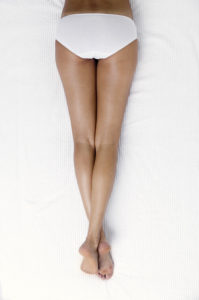
When one considers lower extremity liposuction, two fundamental approaches exist depending on the problem. Spot or unit reduction or a circumferential liposuction technique can be used. While both liposuction techniques are practiced (circumferential less so), the outcomes and risks between the two are different.
Most liposuction of the legs is done to create a better shape, not necessarily to make it measurably smaller. This is the spot or unit reduction approach. Treating the outer and inner thighs, inside of the knees, and the upper inner and lower calf all work to provide a more curvy leg shape, particularly down the inside of the leg. Actual circumferential measurements may not change that much but the shape is visible better. Reducing these selective ‘spots’ or leg units has less risk of irregularities after because the straight liposuction cannula approaches these areas in a more direct vertical direction.
Circumferential liposuction is theoretically appealing but is not only more time-consuming to perform but is associated with a much higher risk of irregularities and more prolonged swelling and bruising. As the fat layer of the leg wraps around circumferentially (which is a curved surface) and the liposuction cannula is a straight rod, it is easy to how uneven fat removal would occur. Cutting across a curved surface in a straight line makes for uneven removal. This does not mean that good and careful surgical technique can not compensate for these geometric differences but suffice it to say it is difficult, particularly when the patient is laying down flat on an operating room table as opposed to standing vertically during the procedure. (which is impossible in an asleep patient)
I have yet to be impressed that circumferential liposuction, which does accomplish some measureable circumferential reduction, can really achieve what the thick-legged patient wants. You just can’t take a thick leg and make it thin. Therefore, I caution patients to think more about specific area of reductions of the legs and look for shape change. The patient seeking circumferential leg size reduction often endures a lot of soreness and swelling to be improved but often disappointed in the final results.
Dr. Barry Eppley
Indianapolis, Indiana


